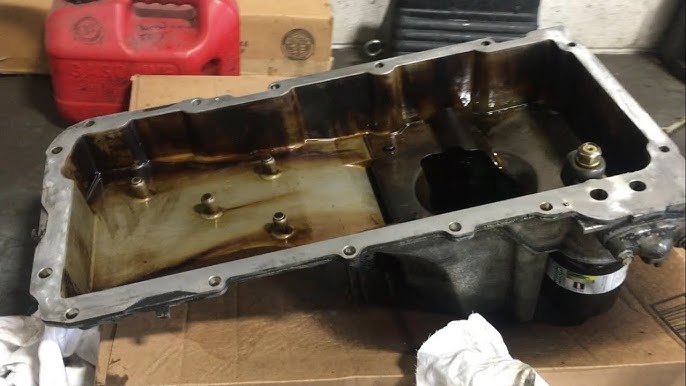When it comes to maintaining your vehicle’s engine, one vital part is the oil pan. For those working with a 5.3 LS engine, understanding the recommended torque specifications for the oil pan is crucial. Correct torque ensures proper sealing, which prevents oil leaks and optimizes engine performance.
Understanding the Oil Pan’s Role
The oil pan is a crucial component of your vehicle’s lubrication system. Its primary function is to hold the engine oil and ensure a consistent oil supply to all moving parts within the engine. It also acts as a reservoir, collecting the oil that drains back from the engine and allowing it to be recirculated.
In addition to holding oil, the oil pan helps dissipate heat and can even serve as a mounting point for components like the oil pump. Given the oil pan’s importance, it is critical to ensure that it is properly secured to prevent issues such as leaks or inadequate lubrication.
The Importance of Correct Torque
Applying the correct torque specification when installing the oil pan is essential for several reasons. First, over-tightening can lead to warping or cracking of the oil pan, making it susceptible to leaks. Conversely, under-tightening can result in insufficient clamping force, leading to oil seepage around the gasket and potential engine damage.
When maintaining your vehicle, always consult the manufacturer’s specifications for torque settings. For the 5.3 LS engine, following the recommended torque specs ensures longevity and reliability, reducing the need for costly repairs in the future.
Recommended Torque Specs for 5.3 LS Oil Pan
For the 5.3 LS engine, the typical torque specification for the oil pan bolts is around 106 inch-pounds or approximately 8.8 foot-pounds. When setting up the torque sequence, it’s essential to follow a specific pattern, typically a crisscross pattern to ensure even pressure distribution. This method minimizes the risk of damaging the oil pan and prevents leaks.
Using a torque wrench calibrated in inch-pounds allows for precise measurements when applying torque. Always start at a lower torque value to avoid over-tightening, then gradually increase to the recommended specification.
Tools Required for the Job
Before you start working on your 5.3 LS engine’s oil pan, it’s essential to gather the right tools. A torque wrench is a must-have for accurately applying the specified torque to the bolts. It’s advisable to have both a standard and a ratcheting wrench for varying access points.
Additionally, you’ll need a socket set, preferably with deep sockets, to reach the oil pan bolts comfortably. Make sure to have a good sealant or gasket material on hand to ensure a proper seal when securing the oil pan back into place. Working with the right tools makes the task smoother and ensures all bolts are tightened uniformly.
Steps to Properly Torque the Oil Pan
- Preparation: Before starting, ensure that all surfaces are clean and free of old gasket material. Use a scraper to remove any residue and wipe the surfaces with a solvent for a clean finish.
- Apply Gasket Sealant: If using a gasket instead of sealant, ensure it’s positioned correctly. If a liquid gasket is used, apply it evenly to provide a good seal when the oil pan is tightened down.
- Hand-tightening: Begin by hand-tightening all the bolts. This ensures that they are seated properly, avoiding cross-threading and ensuring an even touch across all bolts.
- Torque Sequence: Following a crisscross pattern, use your torque wrench to gradually tighten the bolts to the recommended torque specifications. This method ensures even pressure across the oil pan, reducing the chance of leaks.
- Final Check: Repeat the sequence after all bolts have been tightened. If necessary, make minor adjustments to ensure all are uniformly tightened.
Common Mistakes to Avoid
When working with the oil pan, several common mistakes can lead to issues down the line. One of the primary pitfalls is neglecting to check for old gasket material and debris on the sealing surfaces. Always ensure a clean surface before applying a new gasket or sealant.
Another common error is failing to follow the correct torque sequence. Ignoring this can create uneven pressure on the oil pan, leading to leaks. Using an improper torque setting can also cause severe damage. Therefore, using a calibrated torque wrench and sticking to the specified torque settings is crucial.
Signs You Need to Re-torque the Oil Pan
Even if you’ve followed all the steps correctly, there may come a time when the oil pan requires re-torquing. Signs of needing adjustments include visible oil leaks or low oil levels, which can signal that the oil pan isn’t sealed properly.
Regularly checking your oil levels is a good practice if you’re experiencing oil consumption issues. If you notice any anomalies, especially after a significant period of driving, re-check the torque specifications to ensure everything is in place.
Conclusion
The oil pan plays an essential role in maintaining your vehicle’s engine health, especially for the 5.3 LS engine. Applying the correct torque specifications when installing or replacing the oil pan is crucial for optimal performance and longevity. By ensuring that all bolts are tightened to recommended specifications and following a systematic approach to installation, you can prevent leaks and engine damage down the line.
Taking the time to properly torque the oil pan not only protects your investment but also ensures that your vehicle continues to operate efficiently. With proper maintenance, you can enjoy the benefits of a well-lubricated and effectively functioning engine, helping you get the most out of your vehicle.
FAQs
1. What happens if I over-torque the oil pan?
Over-torquing can warp the oil pan, leading to cracks or leaks, which compromises the oil seal and may require replacing the oil pan entirely.
2. Can I use a regular wrench instead of a torque wrench?
While you can technically use a regular wrench, it is not advisable as it does not provide accurate measurements. A torque wrench is crucial for ensuring the proper torque settings are met.
3. How often should I check my oil pan’s torque specs?
It’s good practice to check the torque specs whenever you’re doing major maintenance or after significant usage, especially if you suspect any oil leaks or consumption issues.
4. What type of gasket should I use for the oil pan?
The type of gasket can vary based on your specific oil pan setup. It’s best to consult your vehicle’s service manual or a trusted parts supplier to determine which type is recommended.
5. Is re-torquing the oil pan a common maintenance task?
While not routinely required, checking and re-torquing the oil pan once in a while can help prevent issues, especially in high-performance applications or if you’re experiencing oil leakage.



